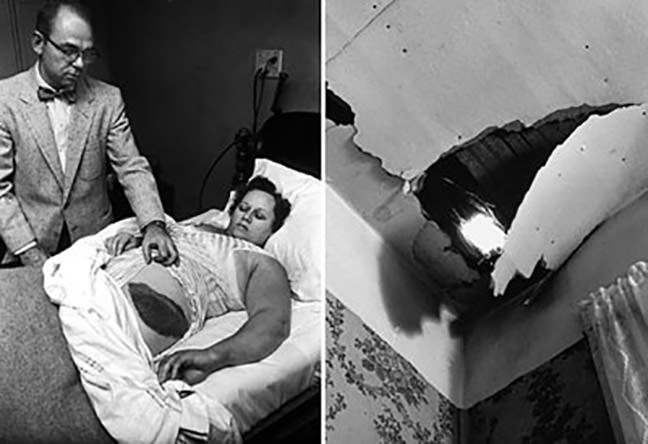Last Saturday, Feb. 6th, a meteorite reportedly struck a bus driver on the campus of the Bharathidasan Engineering College in southern India. Three students were also injured and several windows were shattered in some kind of explosion. Online videos and stills show a small crater left by the impact. If true, this would be the first time in recorded history a person was struck and killed by a meteorite.
Meteorite or …?
Call me skeptical. Since the purported meteorite weighed about 50 grams — just under two ounces — it would be far too small to cause an explosion or significant impact crater five feet deep and two feet wide as depicted in both video and still photos. There were also no reports of rumbles, sonic booms or sightings of a fireball streaking across the sky, sights and sounds associated with material substantial enough to penetrate the atmosphere and plunge to the ground. Shattered windows would indicate an explosion similar to the one that occurred over Chelyabinsk, Russia in February 2013. The blast wave spawned when the Russian meteorite fractured into thousands of pieces miles overhead pulverized thousands of windows with flying glass caused numerous injuries.
According to a story that ran in The News Minute, a team led by the Indian Space Research Organization (IRSO) recovered an object 2 cm (3/4 inch) in width that weighed 50 grams and looked like a meteorite with “air bubbles on its rigid surface”. There’s also been chatter about meteor showers dropping meteorites to Earth, with various stories reporting that there no active meteor showers at the time of the driver’s death. For the record, not a single meteorite ever found has been linked to a shower. Dust and tiny bits of comets produce most shower meteors, which vaporize to fine soot in the atmosphere.
Now even NASA says that based on images posted online, the explosion is “land based” rather than a rock from space.
There have been close calls in the past most notably in Sylacauga, Alabama On November 30, 1954 at 2:46 p.m. an 8.5 lb rock crashed through the roof of a home not far from that town, hit a radio console, bounced off the floor and struck the hand and hip of 31-year-old Ann Hodges who was asleep on the couch at the time. She awoke in surprise and pain thinking that a space heater had blown up. But when she noticed the hole in the roof and a rock on the floor, Hodges figured the neighborhood kids had been up to no good.

Fortunately her injuries weren’t serious. Ann became a sudden celebrity; her photo even appeared on the cover of Life magazine with a story titled “A Big Bruiser From The Sky”. In 1956 she donated the meteorite to the Alabama Museum of Natural History in Tuscaloosa, where you can still see it to this day. A second meteorite from the fall weighing 3.7 lbs. was picked up the following day by Julius K. McKinney in the middle of a dirt road. McKinney sold his fragment to the Smithsonian and used the money to purchase a small farm and used car.
Claims of people getting hit by meteorites have been on the increase in the past few years with the growth of the social media. Some stories have been deliberately made up and none have been verified. This would appear to be another tall tale if only based upon the improbabilities. In the meantime I’ve dug around and discovered another story that’s more probable and may indeed be the truth, though I have no way as of yet to independently verify it.
Police at the college say that two of the school’s gardeners were burning materials from the garden when the fire inadvertently set off sticks of dynamite that had been abandoned “amid the rocks” when the college was first built. The driver, by the name of Kamaraj and another driver, Sultan, were drinking water nearby when they were hit by the shrapnel and flying glass. Kamaraj began bleeding and was rushed to a hospital but died on the way. More HERE.
In the meantime, we only hope officials get to the bottom of the tragic death.


So the hopes of many, including myself, to make the history books are still good 😀
Indeed BC!
” Indian Space Research Organization (IRSO) recovered an object 2 cm (3/4 inch) in width that weighed 50 grams…”
Somebody needs to get clear information from IRSO. What caused it… ? “2 cm-50 grams”…?
“UT” needs to clarify that…!
Gozlemci – I wish I could. Just dead ends and reports of the same in other stories.